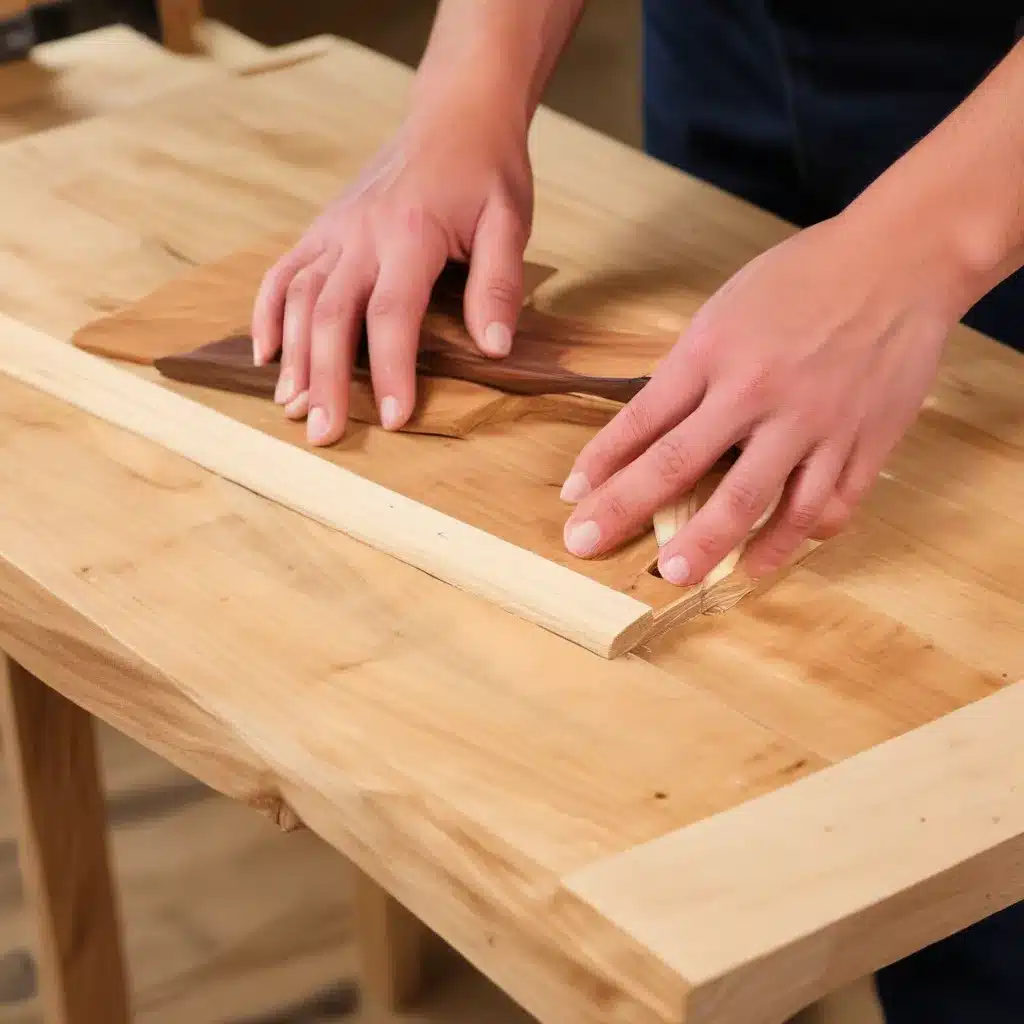
Unlocking the Beauty Within: Exploring the Science of Wood Finishing
As an experienced woodworker and craftsman, I’ve learned that wood finishing is not just about applying a coat of paint or varnish. It’s an art form that requires a deep understanding of the science behind it. Each type of wood has its own unique properties and characteristics that must be considered when choosing the right finishing technique.
Hardwoods like oak and cherry are renowned for their durability and stunning grain patterns, making them a popular choice for furniture and cabinetry. Softwoods like pine and cedar, on the other hand, are lighter and more porous, often used for interior paneling and outdoor applications. Exotic woods offer distinctive colors and textures, but may require specialized finishes to bring out their full beauty.
Selecting the Right Finish: An Art in Itself
Choosing the right wood finish is an art in itself, as it can significantly impact the final appearance and durability of your project. Oil-based finishes penetrate deep into the wood, offering a natural look, while water-based finishes dry quickly and emit fewer fumes. Varnishes provide a protective glossy coat, while stains can enhance or alter the wood’s color.
Each finish has its own unique characteristics, and mastering the art of choosing the right one involves considering both aesthetics and functionality. Whether you’re working on a piece of furniture, a set of cabinets, or a rustic outdoor project, the right finish can make all the difference in bringing out the natural beauty of the wood.
Preparing for Success: The Science of Surface Preparation
Before you can apply any finish, the wood surface must be properly prepared. This is where the science of wood finishing comes into play. Sanding is a crucial step, as it helps to smooth the surface and open up the wood’s pores, allowing for better absorption of stains or finishes.
The process of sanding involves progressively finer grits of sandpaper, starting with coarser grits to remove any imperfections or rough spots, and then moving to finer grits to achieve a smooth, even surface. It’s important to sand in the direction of the wood grain to avoid creating any unwanted patterns or scratches.
After sanding, you may want to apply a wood conditioner to help ensure an even finish. This step is particularly important for softwoods, which can be more prone to blotchiness when stained. By applying a conditioner, you can help to even out the absorption and create a more uniform appearance.
The Art of Application: Brushing, Wiping, and Spraying
Once the wood is properly prepared, it’s time to apply the finish. This is where the art of wood finishing really shines. Depending on the project and the desired outcome, you may choose to brush, wipe, or spray the finish onto the surface.
Brushing is an excellent technique for intricate pieces, as it allows you to apply the finish with precision and control. When brushing, it’s important to work in the direction of the grain to avoid any unwanted streaks or brush marks.
Wiping, on the other hand, is a simple and effective technique for smaller projects. By using a rag, you can apply the finish evenly and smoothly, ensuring a consistent appearance.
For larger projects or pieces with hard-to-reach areas, spraying may be the best option. This method provides an even, seamless finish, but requires more equipment and preparation, such as a spray gun and protective gear.
Regardless of the application method you choose, it’s crucial to remember that proper surface preparation is the key to achieving a flawless, long-lasting finish.
Maintaining the Beauty: Protecting Your Investment
Once you’ve applied the finish, it’s important to keep your wooden project in top-notch condition. Regular cleaning and dusting with a soft, dry cloth can help to preserve the finish and prevent any damage. Avoid using water or harsh cleaning chemicals, as these can be detrimental to the wood’s surface.
To maintain the shine and luster of your finished wood, consider applying a high-quality furniture wax or polish every few months. This will help to protect the surface and keep it looking its best. Additionally, be mindful of potential hazards, such as water rings or spills, and address them immediately to prevent any lasting damage.
Overcoming Common Pitfalls: Lessons Learned
In my experience, the art of wood finishing is not without its challenges. One of the most common mistakes I’ve encountered is inadequate surface preparation. Failing to sand and clean the wood properly can lead to uneven finishes, leaving the project looking less than desirable.
Another frequent issue is over-application of the finish. Applying too many coats can create a sticky or blotchy appearance, so it’s important to follow the manufacturer’s instructions and exercise patience throughout the drying process.
To avoid these pitfalls, it’s crucial to take your time, practice on scrap wood, and familiarize yourself with the recommended techniques and best practices. By doing so, you can elevate your woodworking projects and create stunning, long-lasting results.
Unlocking the Potential of Wood: A Transformative Journey
In the world of woodworking, the art of wood finishing is a transformative journey. It allows you to unlock the true potential of the wood, enhancing its natural beauty and providing essential protection for your projects. Whether you’re working on a piece of furniture, a set of cabinets, or a rustic outdoor project, mastering the art of wood finishing can elevate your craftsmanship and create lasting, stunning results.
As an experienced woodworker, I’ve learned that the key to success lies in a deep understanding of the science behind wood finishing, as well as a willingness to embrace the creative challenges that come with it. By combining technical expertise with artistic expression, you can unleash the full potential of your wooden creations and leave a lasting impression on all who encounter them.
So, embark on this transformative journey with me, and discover the beauty that lies within the wood. Together, let’s push the boundaries of what’s possible and create masterpieces that will stand the test of time.